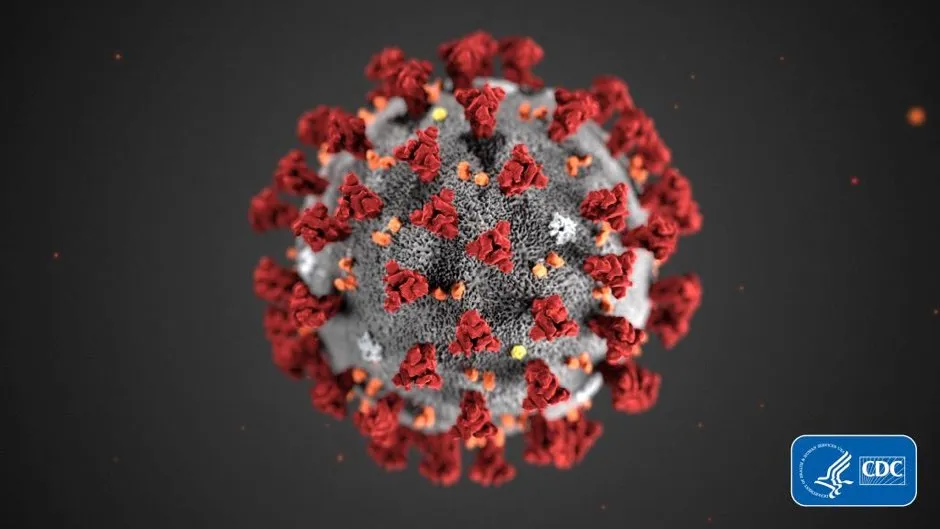Men with heart failure appear to have higher concentrations of a protein in their blood which enables the new coronavirus to infect healthy cells, scientists have said.
Their findings,published in a special issue of the European Heart Journal, are based on patients in their 60s and 70s from 11 European countries.
The researchers measured the concentrations of the protein, known as ACE2, in participants’ plasma, which is the liquid part of blood.
They believe their results may help to explain why men with heart failure are more likely to die after contracting COVID-19 than women.
Dr Iziah Sama, from University Medical Centre Groningen in The Netherlands, and first author of the study, said: “When we found that one of the strongest biomarkers, ACE2, was much higher in men than in women, I realised that this had the potential to explain why men were more likely to die from COVID-19 than women.”
Read the latest coronavirus news:
- 'No evidence' of coronavirus mutating into more dangerous strains
- Testing faults blamed for South Korea coronavirus reinfection results
- Coronavirus: People aged 60-69 also at high risk, experts warn
The researchers also found that levels of ACE2 in the blood were not affected by the drugs commonly used to treat blood pressure.
Dr Adriaan Voors, professor of cardiology at the University Medical Centre Groningen, who led the study, said: “Our findings do not support the discontinuation of these drugs in COVID-19 patients as has been suggested by earlier reports.”
The researchers measured ACE2 concentrations in blood samples taken from two groups of heart failure patients, with 1,485 men and 537 women in the first group and 1,123 men and 575 women in the second group.
However, the team point out that their conclusions are mainly restricted to heart failure patients who did not have COVID-19.
This means they cannot provide a direct link between the disease and ACE2 concentrations in the plasma.

Commenting on the research, Professor Ian Hall, director of the Nottingham Biomedical Research Centre, University of Nottingham, who was not involved in the study, said: “The study has been carefully performed and the number of subjects included is reasonably large so the results are likely to be generalisable to the real world setting.
“There are two caveats worth noting, which the authors acknowledge, the most important being that ACE2 was measured in blood rather than the most important site (i.e. the airways), and the second being that the patients studied had pre-existing heart failure and so may not be entirely representative of the general population.”
He also believes there may be another explanation as to why men, in general, are more susceptible to the disease.
Read more about coronavirus:
- Is lockdown an opportunity for scientific research?
- 5 mental health apps to help you through the coronavirus crisis
- Coronavirus vaccine: could genetic material help defeat COVID-19?
He said: “With respect to the differences in ACE2 expression in men and women, my personal view is that these differences are unlikely by themselves to account for the difference in risk of developing severe COVID-19.
“The actual difference in ACE2 levels between men and women, whilst statistically significant, is in real terms small, and I believe it likely that, whilst this might contribute in a small way, there must be other explanations as to why men are at increased risk of severe disease.
“One potential explanation would be that differential immune responses to the virus, regulated by genetic differences between men and women, may also underlie this difference in susceptibility.”
What is viral load and why is it important to coronavirus?
Viral load is simply the amount of virus in the body. This varies in different parts of the body, and can change over time. Recent studies have shown, for example, that the viral load in the lungs of COVID-19 patients is greater than that in the nose.
A patient’s viral load increases as the virus replicates and disease symptoms get worse, and then decreases as the patient recovers. So monitoring the viral load can give us a useful indication of how a patient’s infection is progressing.
The amount of virus that you’re exposed to at the beginning of an infection is something different, and this is called the ‘infectious dose’. Studies on other viruses such as the flu and SARS have shown that the higher the infectious dose (the more virus you breathe in), the greater your chances of having more severe symptoms.
With one small exposure, your immune system may be able to fight off the virus before you get sick, but with repeated small exposures (such as touching your face throughout the day) or one large exposure (an infected person coughing in your face), the virus may grow faster than your body can control.
We don’t yet know if this link between infectious dose and disease severity holds for COVID-19, but it may do, and that’s why it’s so important to maintain physical distancing and keep the initial exposure as low as possible.
Read more:

